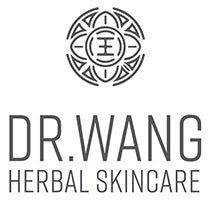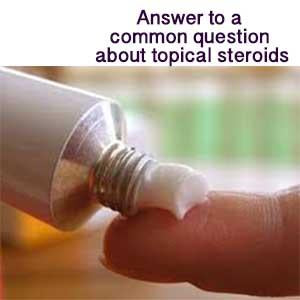
We recently combed through 2460 pages of a dermatology textbook, trying to answer one of the common questions asked by people who use steroids on their skin:
Is there a maximal quantity of steroids one can apply to the skin over a defined period?
Obviously, this is an important question. Topical steroid is a very common medication prescribed by doctors to treat a wide range of skin conditions such as eczema, psoriasis, and allergic contact dermatitis. When used appropriately, (i.e., using the right strength of topical steroids and use it for appropriate amount of time) the medication improve or cure the patients’ skin diseases.
However, many patients are prescribed a much stronger steroid than needed, and use the medication over a long period of time. The end results can lead to various side effects such as thinning of the skin. Worse yet, some patients report to develop topical steroid withdrawal syndrome or red skin syndrome.
Our research team reviewed a well respected Dermatology textbook1, and we specifically focused on the treatment sections for various dermatological conditions, in which steroids are commonly prescribed. We also reviewed an entire chapter on glucoccorsteroids, where the author discussed the mechanism of action, pharmacology, indication, dosage and contraindication of steroid use.
Our team uncovered only one interesting finding.
We found a reference on page 139, Chapter 9, titled “Psoriasis.” The author, Dr. Peter CM van de Kerkhof stated that maximum quantities for using topical steroids to treat psoriasis is 50g per week of superpotent corticosteroids and 100g perweek of potent corticosteroid.
|
Potency Ranking of Some Commonly Used Topical Glucocorticosteroids
|
|
Class 1 (Superpotent) |
|
· Clobetasol proprionate ointment and cream 0.5% · Betamethasone diproprionate gel and ointment (optimized vehicle) 0.05% · Diflorasone diacetate ointment (optimized vehicle) 0.5% · Halobetasol proprionate ointment 0.05%
|
|
Class 2 (High Potency) |
|
· Amcinonide ointment 0.1% · Betamethasone diproprionate AF cream 0.05% · Desoximetasone gel, ointment and cream 0.25% · Diflorasone diacetate ointment 0.05% · Fluocinonide gel, ointment, and cream 0.05% · Halcinonide cream 0.1% · Mometasone furoate ointment 0.1%
|
|
Class 3 (High Potency) |
|
· Amcinonide cream 0.1% · Betamethasone diproprionate cream 0.05% · Betamethasone valerate ointment 0.1% · Diflorasone diacetate cream 0.05% · Fluticasone proprionate ointment 0.05% · Triamcinolone acetonide cream (HP) 0.5% · Triamcinolone acetonide (Kenalog) ointment 0.1%
|
|
Class 4 (Medium Potency) |
|
· Fluocinolone acetonide ointment 0.025% · Flurandrenolide ointment 0.05% · Fluticasone proprionate cream 0.05% · Hydrocortisone valerate ointment 0.2% · Mometasone furoate cream 0.1% · Triamcinolone acetonide (Kenalog) cream 0.1%
|
|
Class 5 (Medium Potency) |
|
· Alclometasone diproprionate ointment 0.05% · Betamethasone diproprionate lotion 0.05% · Betamethasone valerate cream 0.1% · Fluocinolone acetonide cream 0.025% · Flurandrenolide cream 0.05% · Hydrocortisone butyrate cream 0.1% · Hydrocortisone valerate cream 0.2% · Triamcinolone acetonide lotion 0.1%
|
|
Class 6 (Low Potency) |
|
· Alclometasone diproprionate cream 0.05% · Betamethasone valerate lotion 0.05% · Desonide cream 0.05% · Fluocinolone acetonide cream 0.01% · Fluocinolone acetonide solution 0.05% · Triamcinolone acetonide (Aristocort) cream 0.1%
|
|
Class 7 (Low Potency) |
|
· Topicals with hydrocortisone, dexamethasone, and prednisolone
|
The search was only partially satisfactory. From this reference, we understand the maximum recommended dosage to use topical steroids per week for different strengths of medications.
However, we had other questions:
1. Is this recommended dosage apply to children?
2. What are superpotent steroids and potent steroids? For that question, our team tracked down a very useful table ranking the potency of commonly prescribed topical corticosteroids.
Superpotent corticosteroids (class I steroids) are clobetasol ointment and cream 0.05%, betamethasone diproprionate gel and ointment 0.05%, diflorasone diacetate ointment 0.5% and halobetason proprionate ointment 0.05%.
3. Does this recommended dosage only apply to the treatment of psoriasis? What about other skin conditions, such as eczema?
4. This reference only told us about the maximum dosage per week. But, is there a maximum dosage over a period of 3 months, 6 months, or a year? Also, is there a total maximum dosage in one’s lifetime?
The bottom line, the research only found a small piece of information regarding the maximum dosage of topical steroids use. It is clear that more research is needed from our team. Please drop us a note in the comment section, if you know of other references or sources that have answered those other questions.




Thank you for work and interest in RSS/TSA/TSW. Your efforts are greatly appreciated. You may also want to check out this video from Dr. Koushik Lahir @ drlahiri.org. “Steroid Awareness Lecture” under his picture.
Thanks for sharing this Dr. Wang. ITSAN is grateful for any doctors who take an honest interest in the risks of using topical steroids in a way that could produce steroid induced dermatitis or addiction.
Here is a quote from one study on steroid induced rosacea that fits whole body RSS/TSW as well.
“The simple conclusion is to avoid use of steroids on the face for prolonged periods of time to avoid entities such as steroid rosacea, perioral dermatitis and steroid induced acne. It is worth noting that cessation of steroid therapy for the face is often difficult to accomplish secondary to resultant flares. This leads patients, and uninformed health-care providers, to the false assumption that these topical preparations were resulting in improvement of disease and that perhaps more medication is needed, thus, perpetuating the disease process.”
http://www.the-dermatologist.com/content/steroid-rosacea-paradox-melanoma-epidemic-and-steroid-concentrations-and-biologic-activity